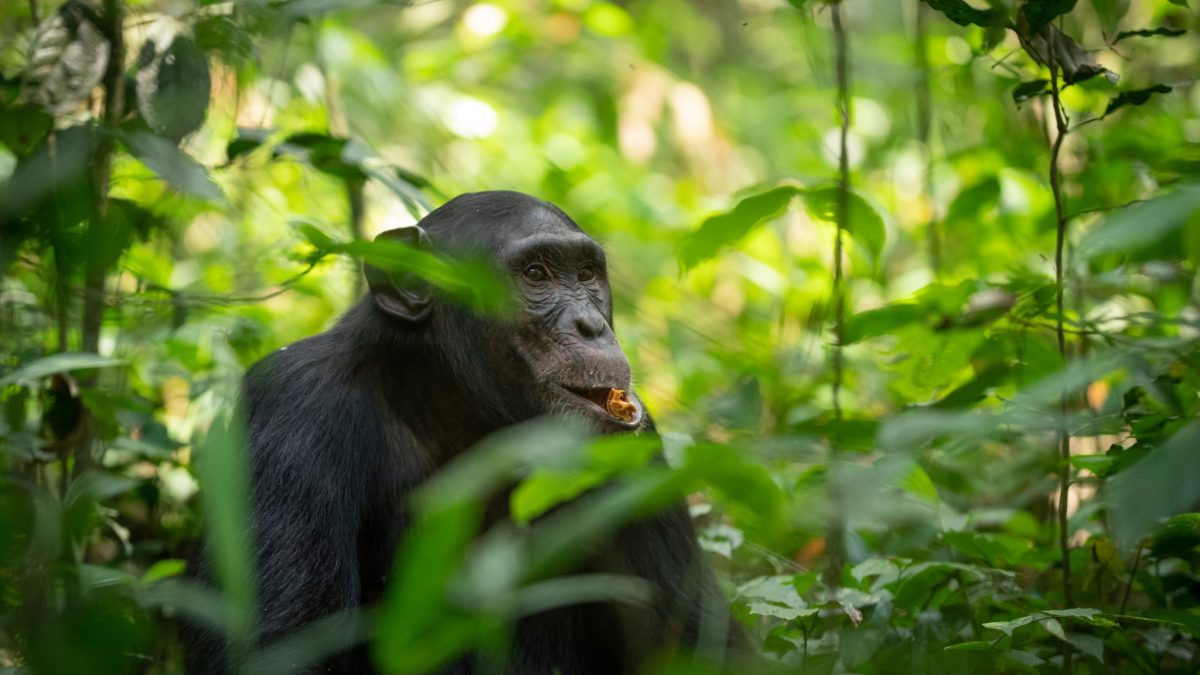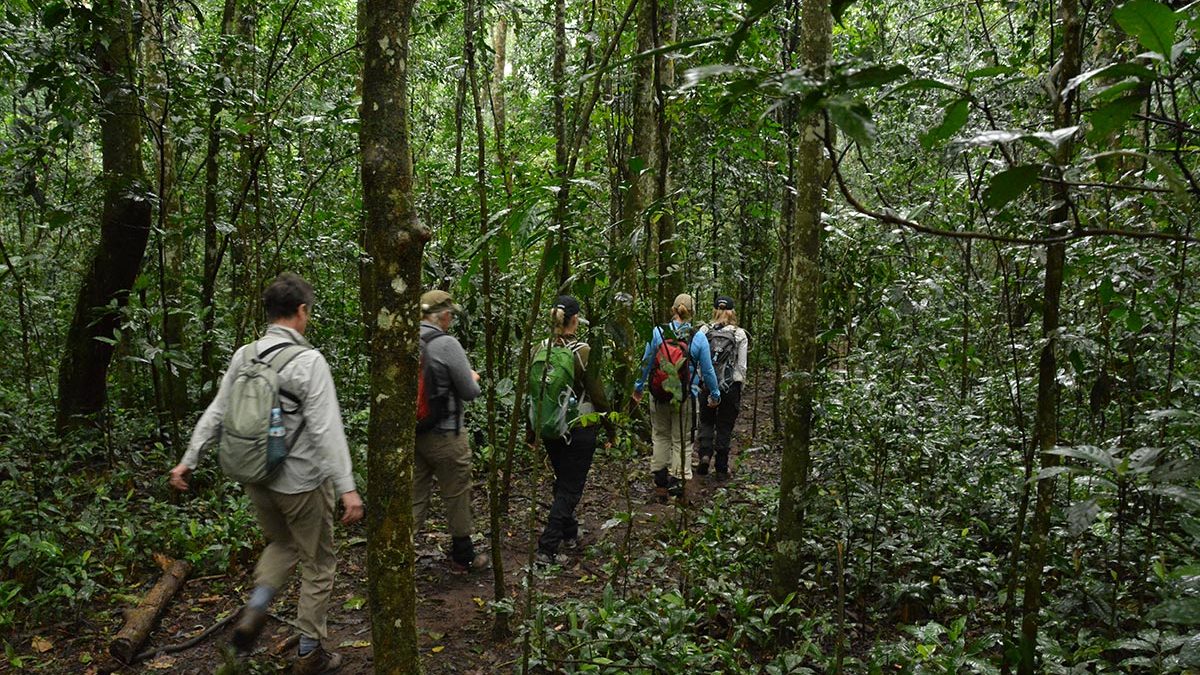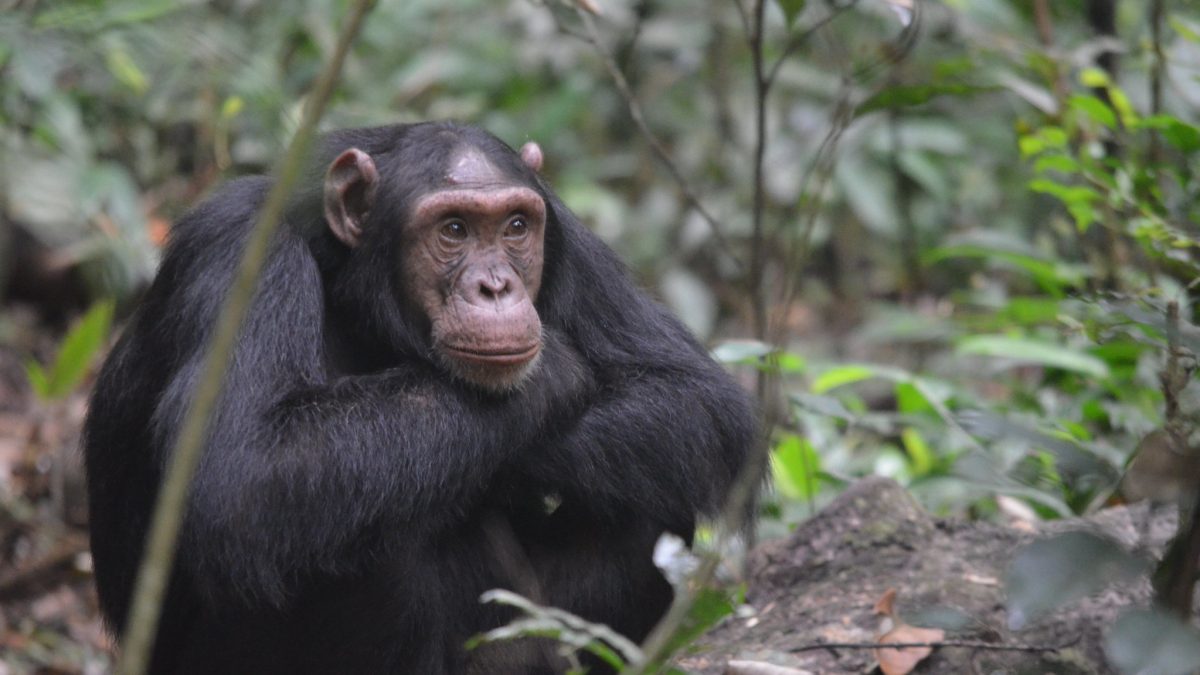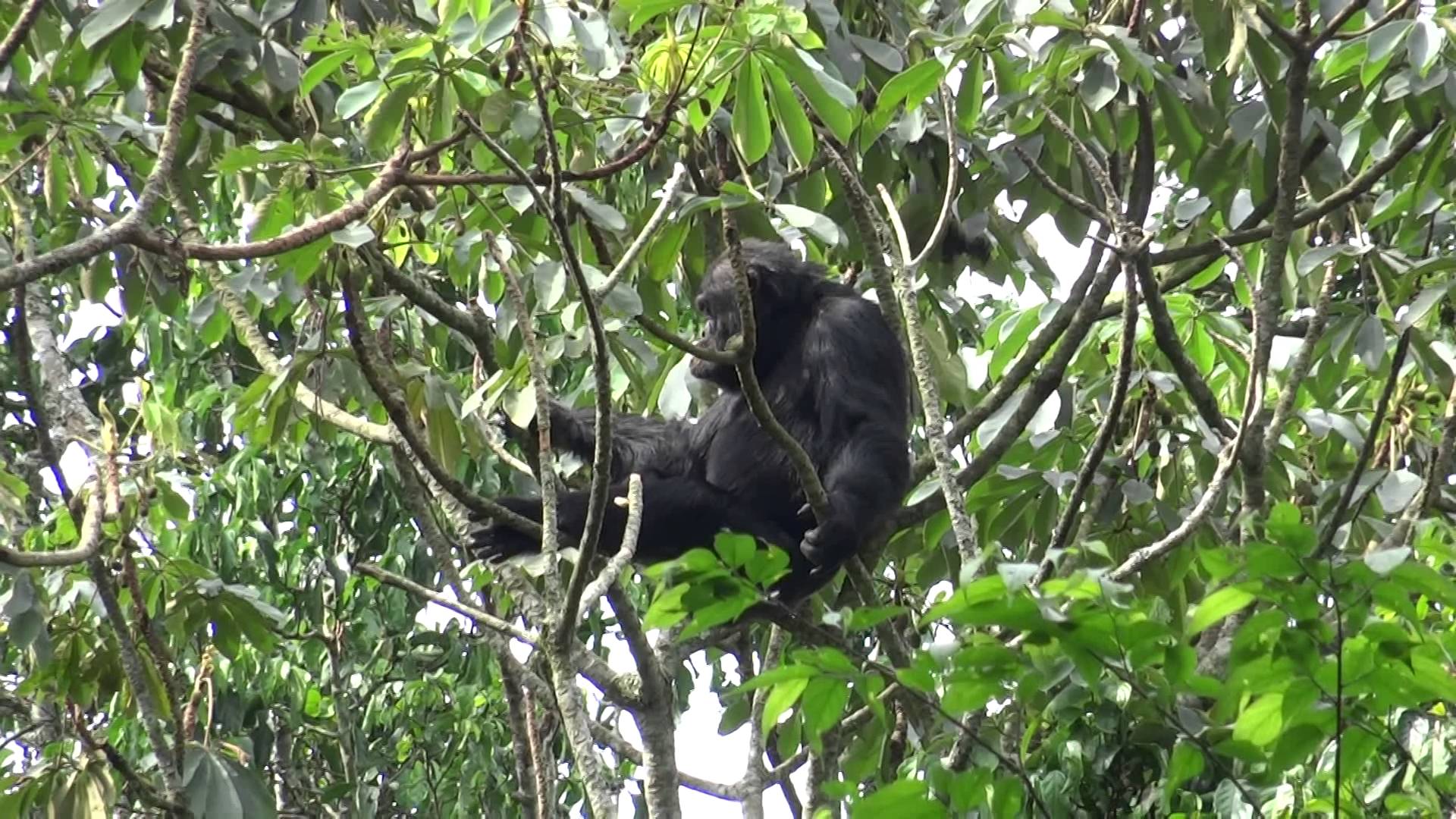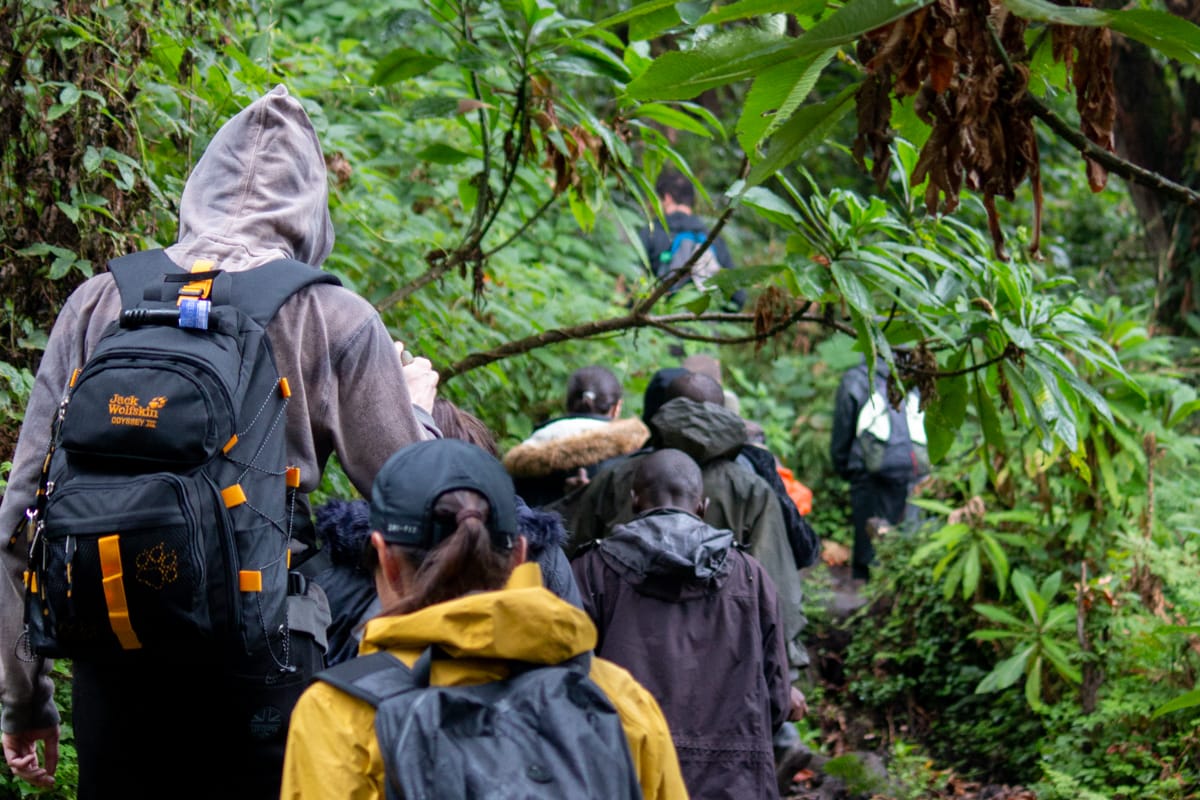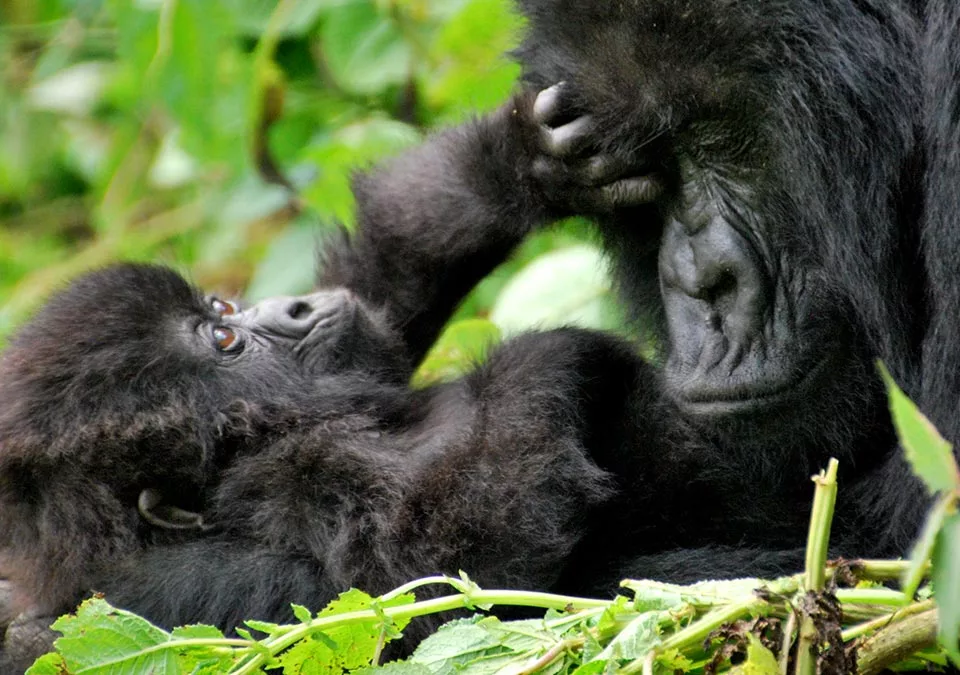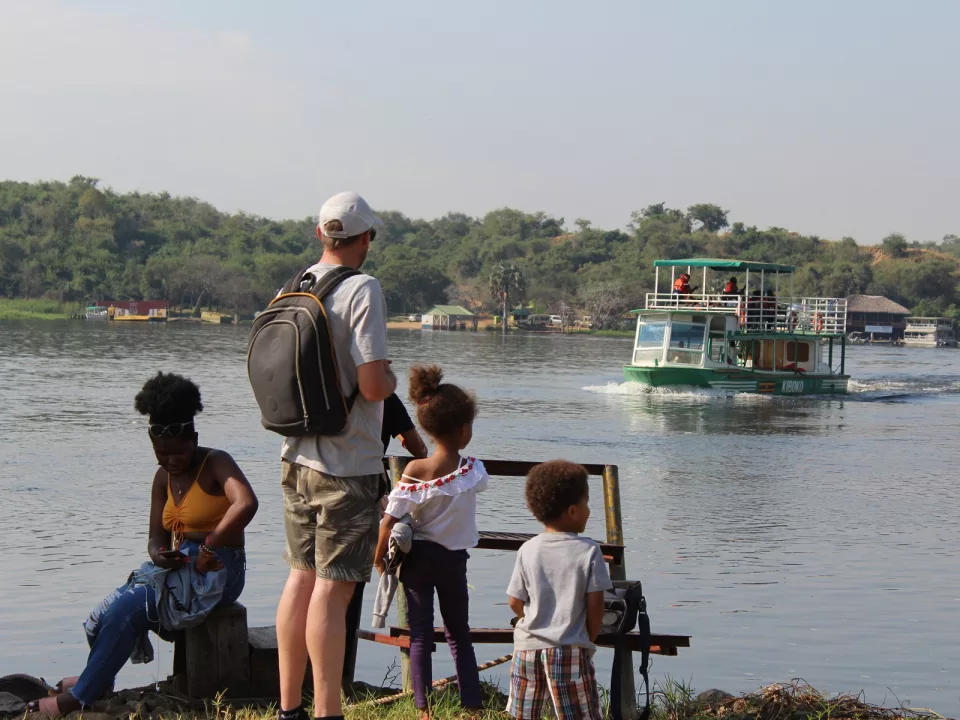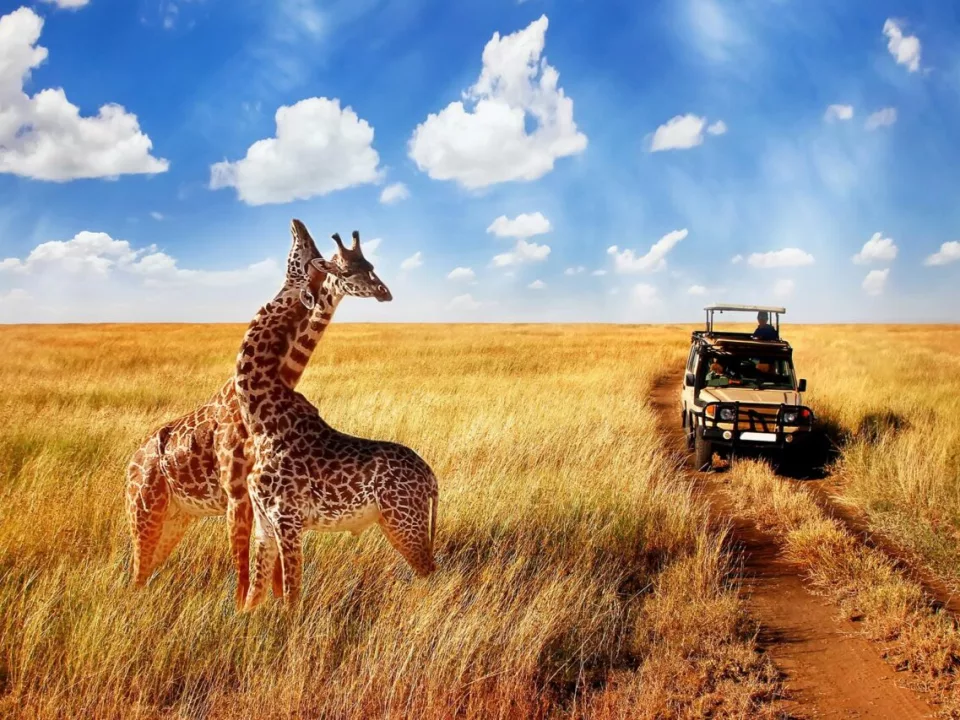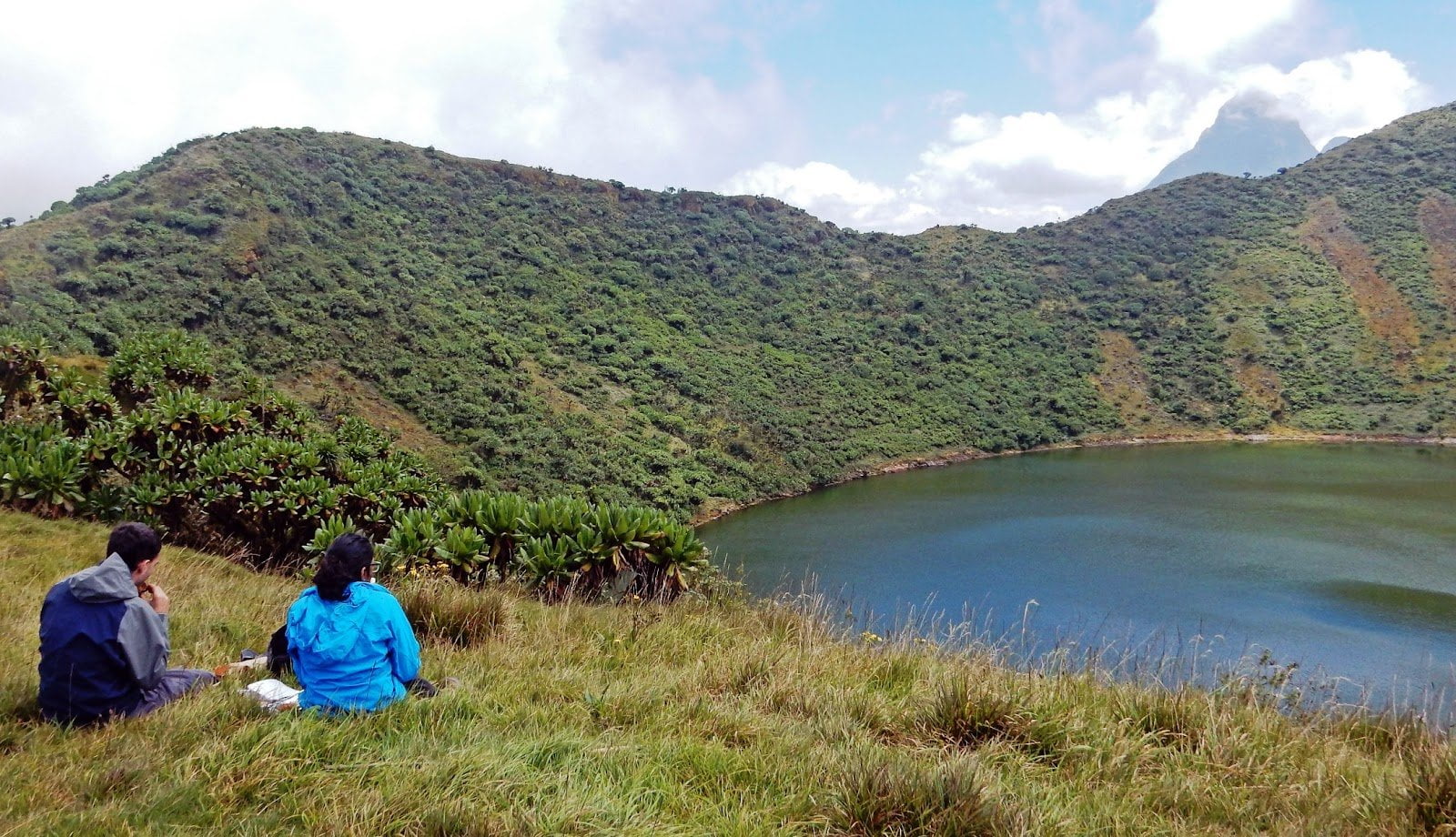
Mount Bisoke Rwanda
October 6, 2022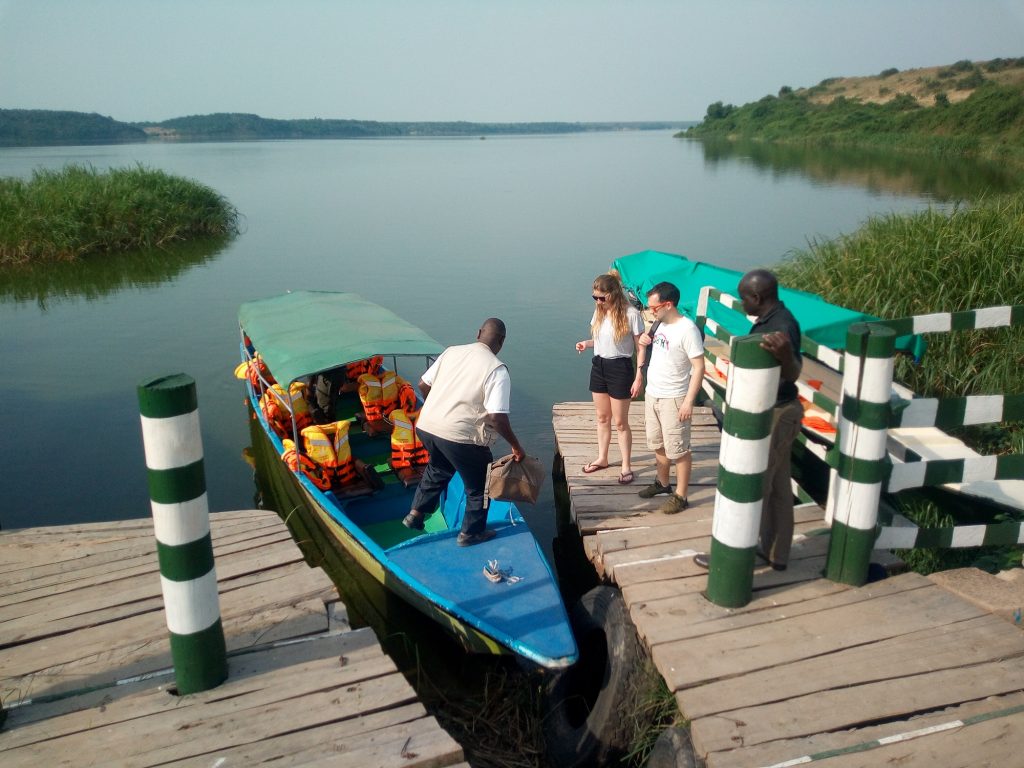
Kazinga Channel in Queen Elizabeth National Park
October 14, 2022Chimpanzee Tracking in the Kyambura Gorge Uganda – Queen Elizabeth National Park
Kyambura Gorge is an underground rainforest located in Queen Elizabeth National Park. The gorge is 100 meters deep and about 1 kilometer long. It is an extension of the Kyambura Game Reserve, which is part of the Queen Elizabeth National Park. The Kyambura Gorge is characterized by a lush rainforest that is home to a large number of birds, primates, and mammals such as elephants and hippos. The gorge is surrounded by vast summer grasslands, although human plantations and villages are not far away. The surrounding Savannah is sunny, while the Kyambura Gorge itself is relatively cool due to less direct sunlight due to the tall trees.
The Kyambura River is an important water source that flows through the center of the forest and provides water for flora and fauna throughout the year. Most of the water in the River Kyambura comes from the rocks around the gorge and during the rainy season. Kyambura Gorge is connected to Kazinga Strait in Queen Elizabeth National Park through extensive swamps/wetlands. Local legend says that there was heavy rain in the area, which caused a flood that washed away some people and their possessions. After the rains stopped and the floods receded, people went in search of missing relatives and property, but to no avail. Everyone returned with a sigh and used the word “Kyambura” which means “lost” or “I cannot find”. This place and Gorge is known as Kyambura due to extensive property damage and missing persons.
How was Kyambura Gorge formed?
Scientists have developed some theories to explain the formation of this wonderful natural feature. One group believes that the Gorge was formed due to constant erosion by the forces of the Zangbul River. In this way of thinking, the river below the Gorge was once huge, flowed with great speed and force, and left the valley after the water level receded. A more accepted theory links the formation of the rift to the time of the formation of the Great Rift Valley. The Great Rift Valley was formed when compressional forces created a strain in the Earth’s crust that lifted parts of the Earth and created a huge valley between them. Later, a secondary fault occurred at the bottom of the Great Rift Valley. It is this secondary fault that forms other valleys, including Kyambura Gorge.
Kyambura Gorge is often referred to as the “Valley of the Monkeys” because of the forest in which chimpanzees and other smaller primates are trapped. Kyambura Gorge’s chimpanzee population is so well-adjusted that it is the only place where visitors can track the primates in Queen Elizabeth National Park.
Chimpanzee Tracking in Kyambura Gorge
Chimpanzee tracking is undoubtedly the most exciting thing to do in Kyambura Gorge – why not? Chimpanzees are close relatives of humans and have high IQs compared to most primates. They can walk on two legs, like us, but also short distances because they prefer to use all four limbs. Chimpanzees live in communities of 30 to 80 members. Large groups are divided into smaller groups, fed individually, and then returned to the group at night. They breed in treetops and rest in the afternoon and evening. It takes a short time to make a nest, just put a few branches together to make a comfortable chimpanzee sofa.
The most active part of the day for chimpanzees is after leaving their temporary den in the morning. They become very selective, starting with random fruit picking in the morning when they become fuller in the afternoon. Thanks to their high intelligence, chimpanzees use stalks against enemies, including humans. The same stems can be used to remove/coax termites out of their holes. Although chimpanzees primarily eat fruit, they kill duikers and other primates for food. The hunt is organized in a small groups, and the unfortunate victims are hunted, pickled, and eaten.
Brief About Kyambura Gorge
For thousands of years, chimpanzees in Kyambura Gorge have crossed a smaller natural forest corridor to forage and mate with other chimpanzee communities in forests such as Katsyoha-Kitoma, Maramagambo, and Kalinzu. This forest corridor was destroyed by humans by clearing forests and creating new settlements. Chimpanzees trapped in a ravine. The only way to get to other forests is through the Savannah, which is home to full-fledged predators such as lions, leopards, and hyenas. The chimpanzees have no choice but to stay in the Gorge and fend for themselves. Scientists worry that inbreeding can lead to mutations and lower birth rates.
Chimpanzee Tracking Permit to Kyambura Gorge
To track chimpanzees in Kyambura Gorge, you must first obtain a permit from the Uganda Wildlife Authority. Permits were obtained at the park office in Mway. The authority issues only 8 permits per session, for a total of 16 permits issued per day. Visitors from Mweja must drive to the gorge for an orientation. After the briefing, visitors are given a walking stick and a guide to lead them down the gorge. The first task was to descend a 200-meter slope down to the river below. Chimpanzees have very loud voices and can be located by following their calls and long-distance conversations.
If they are quiet, their tracks (in the mud) and droppings can help you find them. Once you find them, you can watch them play, nurse, mate, rest, and even fight. Chimpanzees in the Kyambura Gorge have a remarkable habit of falling from trees whenever they see a tourist. This allows for great close-ups. In addition to chimpanzees, hiking through the Gorge exposes visitors to unique and surprising biodiversity. Visitors will have the opportunity to discover rare vegetation and tall tropical trees. The gorge is also home to mammals such as hippos, elephants (occasionally), and other small primates. The whole operation takes 2 to 3 hours. You can also check out our 3-day Chimpanzee Trek in Kibale National Park for comparison.
What you need to know about the chimpanzees that roam Kyambura Gorge
- All the chimpanzees in Kyambura Gorge are habituated (accustomed to the presence of humans). A chimpanzee permit for international visitors at Kyambura Gorge costs $50. Ugandans, East African nationals, and foreign nationals living in the country pay 30,000 shillings each. It is important to pre-order your license to avoid last-minute disappointment.
- Chimpanzee tracking in Kyambura Gorge is very demanding as it requires trekking up and down the valley. Once you are in the Gorge, you may also have to follow the primates for longer periods. The person must be fit to complete the activity without putting too much strain on the body. But for nature lovers, this activity is very beneficial. Exploring an underground forest with amazing flora and fauna is a rare treat. You will never forget this experience. Must be at least 12 years old to use chimpanzee tracking.
- The chances of seeing chimpanzees are not as high as in the Kibale forest. This is because chimpanzees sometimes get too far into the gap to arrive in time. However, most visitors see the chimpanzees and rarely miss anything. If you’re interested in tracking chimpanzees, you might want to check out Queen Elizabeth’s 2-Day.
How to get into Kyambura Gorge?
The distance from Kampala to the Gorge through the town of Mbarara is about 420 kilometers. If you use the Kampala Fort Gateway route, the distance is 410 km. The drive to Queen Elizabeth National Park usually takes about 6 hours by road. To avoid the long journey, tourists can book a charter flight from Entebbe International Airport to Mwea Airport. The flight lasts about an hour. From the airport, your tour company or hotel can arrange a private car to pick you up at the Mwea Visitor Centre. After paying for your tickets in Mweya, you will be transferred to Kyambura Gorge. Kyambura Gorge is 30 km from Mweya Visitor Centre. Kyambura Gorge has its small visitor center at Fig Tree Camp on the edge of the Gorge.
Kyambura Gorge Attractions
Primates and other wildlife:
In addition to chimpanzees, Kyambura Gorge is home to baboons, baboons, red-tailed monkeys, and colobus monkeys. You can see primates and birds feeding in the valley from the edge of the Gorge or still on the Savannah. The view from the surrounding Savannah is a wonderful experience. In fact, instead of rappelling down the Gorge, visitors can simply walk around the edge of the Gorge and marvel at the scenery below. If you decide to go down, you can expect to see many forest creatures, including hippos, antelopes, and elephants. Lions, hyenas, buffaloes, leopards, and other mammals also visit the gorge from time to time.
Nature and Forest Walks:
Kyambura Gorge is a great place to explore. Many tourists focus on the savannah and wildlife when visiting Queen Elizabeth National Park. Little did they know that their work was missing the great wonders of nature. In addition to the natural beauty, you will feel that you are in another world – a mysterious and interesting place. Guided walks can be done tracking chimpanzees, or you can go solo to see forest creatures such as large wild boars, colobus monkeys, pygmy monkeys, and hippos. A nature walk at Kyambura Gorge Wildlife Sanctuary will take you to a whole different world.
From the parched savanna surrounding the gorge, you suddenly find yourself in a cool underground forest with beautiful foliage and fantastic creatures. Your guide will share information about the valley, including its history, animals, and birds. Nature walks are divided into morning and afternoon classes. Early morning nature walks start at 08.00 and afternoon walks at Fig Tree Camp at 13.00 Only two groups can participate in nature walks during each lesson. There are usually 4 people in each group.
Bird watching:
Kyambura Gorge is a paradise for bird watchers. The gorge is attractive to birds because of the tall trees and nature. The trees are full of fruit and insects that the birds love. Many of the birds are forest dwellers, but countless others deliberately venture into the Gorges to forage before retreating to their nests in the savannah or wetlands near Lake Albert and Lake George. Common species include the African broadbill, marauder, falcon, African seal owl, African goshawk, white-tailed lark, platypus, rosy pelican, partridge stork, meadowlark, papyrus canary, Chapin’s flycatcher, papyrus gonolek, black-knotted quail, white-winged tern, and flamingo.
Hotels and Safari Lodges Near Kyambura Gorge
There are several accommodation options near Kyambura Gorge, ranging from basic to exclusive facilities. Visitors can also stay in cabins near the Queen Elizabeth National Park offices and head into the Gorge early in the morning for activities. Budget hotels include Mweya Hotel and Simba Safari Hotel. Mid-range lodges include Jungle Lodge, Ihamba Safari Lodge, and Hippo Hill Lodge. Luxury lodges include Jacana Safari Lodge, Katara Lodge, Kingfisher Camp, and Mweya safari Lodge. For those looking to book a truly luxurious lodge close to the Gorge, Kyambura Gorge Safari Lodge is undoubtedly the best option.
Kyambura Gorge Lodge
Kyambura Gorge Lodge is owned by Volcano Safaris and opened in 2009. The lodge is undoubtedly close to the Kyambura Gorge luxury hotel. All 8 cabins are built from local materials and are set in the African bush to give guests the privacy they need. Rooms feature free Wi-Fi, balconies, luxury showers, flush toilets, mosquito nets and desks, and many other luxury amenities. The hotel has a lounge area, a fireplace, and a restaurant serving local and international cuisine. The hotel has an elevated platform and visitors can enjoy views of the gorge, the Savannah, and the Rwenzori Mountains.
After more than 2 hours of searching for chimpanzees, you can come back to use the large swimming pool while enjoying the beauty of the African desert. Kyambura Game Lodge has a private garden where local vegetables and fruits are grown and served to guests during meals. Nights at Kyambura Game Lodge are exceptionally quiet and guests can hear the sounds of animals and insects. Since the hotel has few rooms, the staff takes care of customers with great attention to detail. Evening entertainment includes traditional dances and other performances by local tribes.


